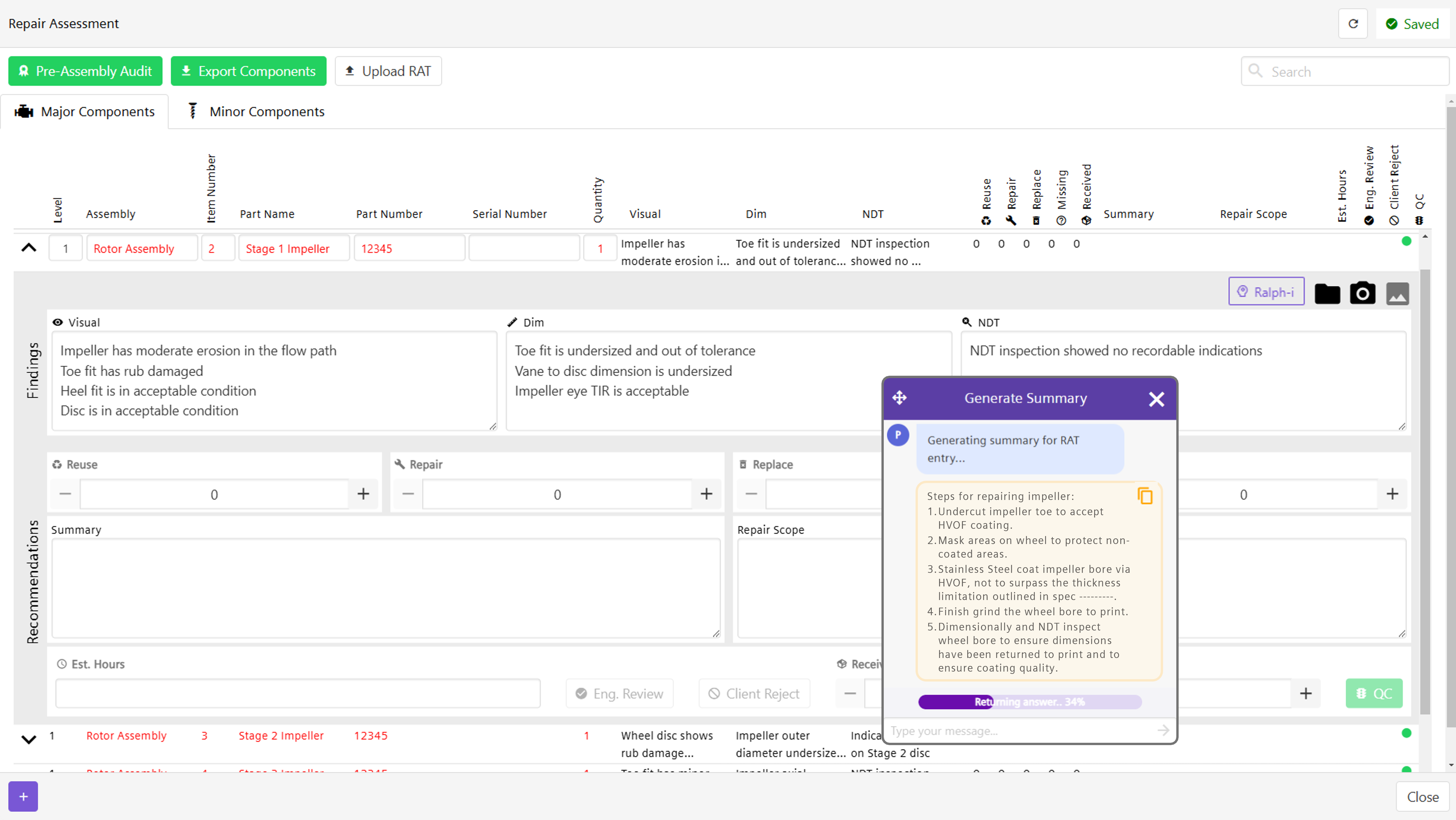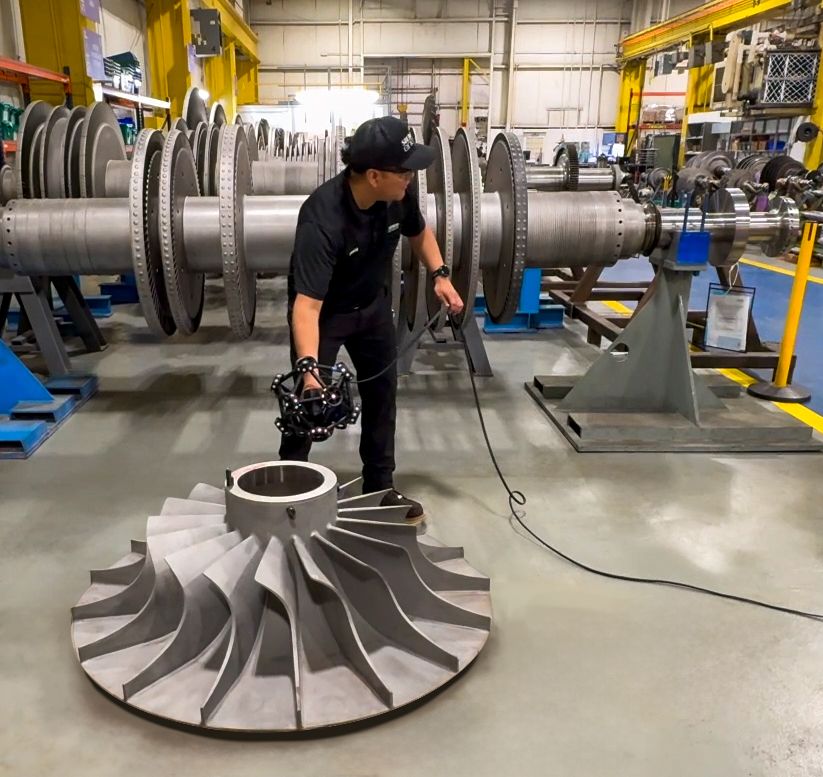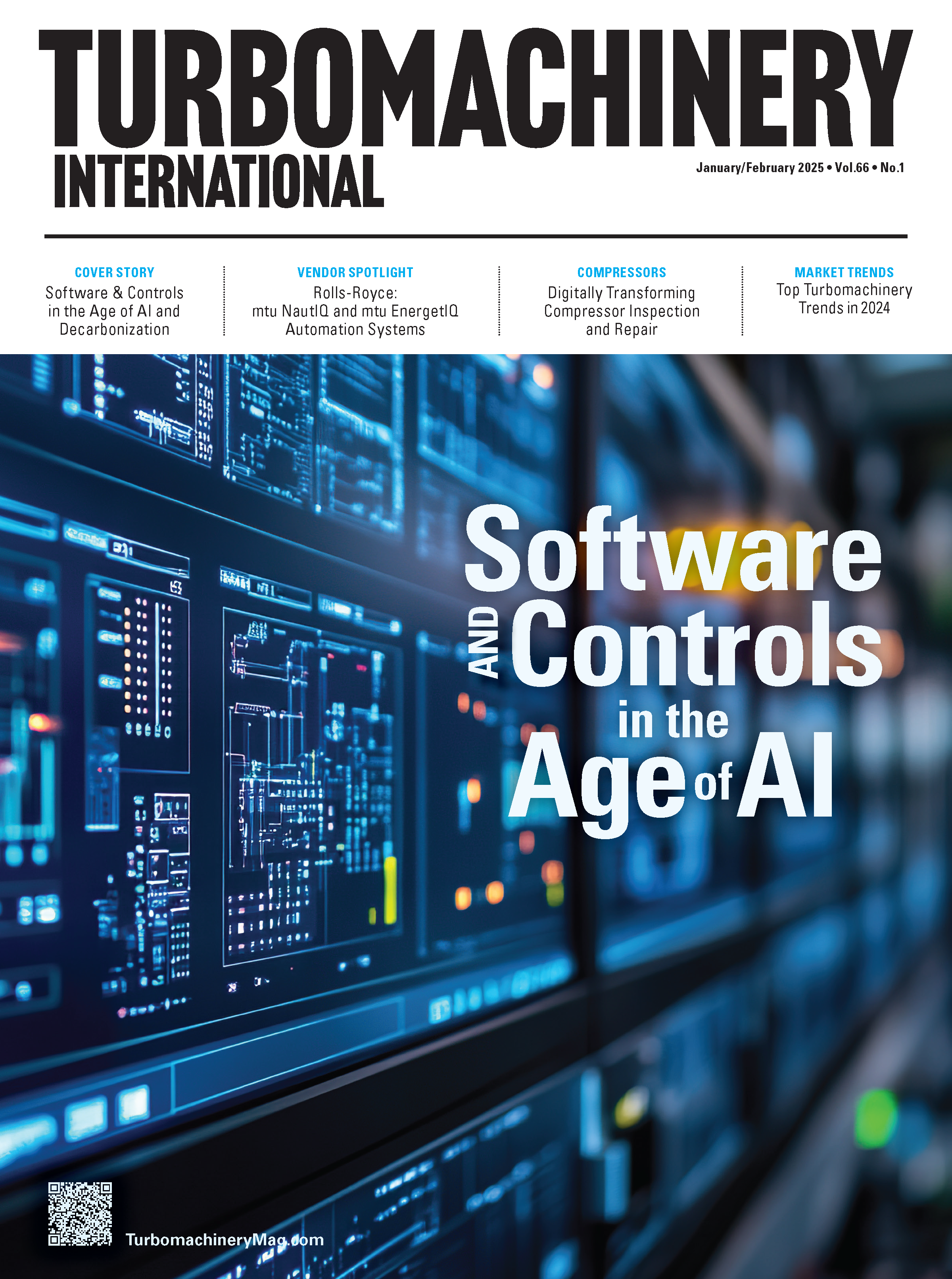Digitally Transforming Compressor Inspection and Repair
Combining 3D laser scanning and generative AI automates inspection processes, enhances service quality, and expedites equipment overhauls.
Inspection before major compressor repairs and/or overhauls has traditionally been tedious and time-intensive. The process often entails shipping equipment to an OEM service center, where technicians can disassemble the unit to take precise measurements by hand and visually examine components, such as rotors, impellers, bearing housings, etc., for wear or damage.
Over the last decade, 3D laser scanning has gained popularity as a tool for streamlining inspections by allowing manufacturers to rapidly detect material deformities or dimensions that are out of tolerance.
As many companies take the next step in the digitalization journey, they are now leveraging these capabilities in combination with generative artificial intelligence (Gen AI) to automate the inspection process further, enhance service quality, and expedite equipment overhauls.
REAL-TIME DIGITAL INSPECTIONS
3D laser scanning reduces and, in many instances, eliminates the need for dimensional measurements to be taken manually. While this capability alone reduces the technician’s workload and provides several advantages in terms of component visualization, additional steps are often needed to fully utilize the scan data being collected.
Automated inspection scripts customized for the specific type and model of machine being serviced extract key measurements from 3D scans. A scan of a first-stage impeller indicates measurements in and out of tolerance.
Measurements from the 3D scan are exported to a digital inspection platform for disposition, allowing technicians to analyze the unit directly from the shop floor in real time and eliminating the need for data processing offsite.
FIGURE 1 is a screenshot from the digital inspection platform showing how the scan results, along with data from manual procedures such as non-destructive testing (NDT), can be used to generate prescriptive repair recommendations using Gen AI. All the information is mapped to enterprise resource planning (ERP) and product lifecycle management (PLM) systems, which allows sales and repair personnel to provide faster and more accurate responses to customers on lead times and costs.
FIGURE 1: Digital inspection platform showing AI-generated repair summary from 3D laser scan and NDT results.

The entire process aims to reduce human error, improve repair consistency across service centers, and expedite compressor overhauls. These efforts have already yielded positive results. For many components, the time it takes to inspect, analyze, and determine necessary repairs has been reduced by more than 50%.
USING GEN AI FOR SEMANTIC SEARCH
Gen AI can also be valuable as a semantic search tool. Particularly for legacy product lines, it is not uncommon for personnel to spend significant time searching old documentation and databases to find answers to questions. In some cases, employees who served as subject matter experts on a particular part or product line in the past have retired, leaving knowledge gaps that can hinder the repair process.
Virtual repair engineers, i.e., chatbots built using Gen AI, can help solve this problem by quickly retrieving and contextualizing information from internal service and product documentation. Large language models (LLMs) can return much more accurate and relevant results to user queries than a traditional keyword search.
When a virtual repair engineer is presented with a query about the type of coating that can be used to repair a damaged journal bearing, the chatbot returns the relevant inspection requirements, coating restrictions, repair options, and even recommended next steps.
EXTENDING DIGITALIZATION TO THE FIELD
Extending digital inspection activities like 3D laser scanning to the field also benefits customers by enabling granular data collection and providing greater flexibility and adaptability in project execution. It may be possible to perform all work onsite for certain inspection activities, avoiding the need to ship machines or components to service centers.
Field scanning can even help address problems beyond the scope of compressor repair. In one example, a plant operator evaluated the drain line redesign during a compressor removal. Technicians scanned the existing configuration and quickly created a new piping isometric that eliminated the need to perform tack welds onsite.
In a separate field application, the operator was concerned about the bedplate leveling of their motor-driven compressor. Onsite scanning revealed that the motor, gearbox, and compressor pedestals were out of tolerance. Measurements from the scan were then provided to the customer to remedy the issue.
Using laser scanning to inspect a large open-faced impeller.

Laser scanning can be used to virtually assemble compressor components before physical assembly. Piecing digital scans together ensures that any potential fitment or interference issues are identified early on. Precision machining can occur before reassembly so that delays during the compressor overhaul or plant turnaround are avoided.
For example, digital preassembly and reassembly of a steam turbine spare rotor allowed a service center to ship components to an offsite machine shop on Day 2 of the turnaround. Had scanning not been used, this likely would have occurred on Day 7 or 8.
CHANGING THE STATUS QUO
Minimizing the duration of planned and unplanned outages remains a priority for process plant operators as they seek to improve margins and extend the useful life of their facilities. 3D laser scanning supports these goals by enhancing the speed and efficiency of inspections. Now, with Gen AI, compressor OEMs can take the next step by further automating the repair process and unlocking new capabilities that have previously not been possible.
As these technologies continue to advance, they will eventually become the standard for inspection and repair, generating tangible value for both manufacturers and their customers through lower costs, improved repair consistency, and shorter equipment overhauls.
About the Author
Steven Baird is the Head of Repair Technology in Compression at Siemens Energy.
